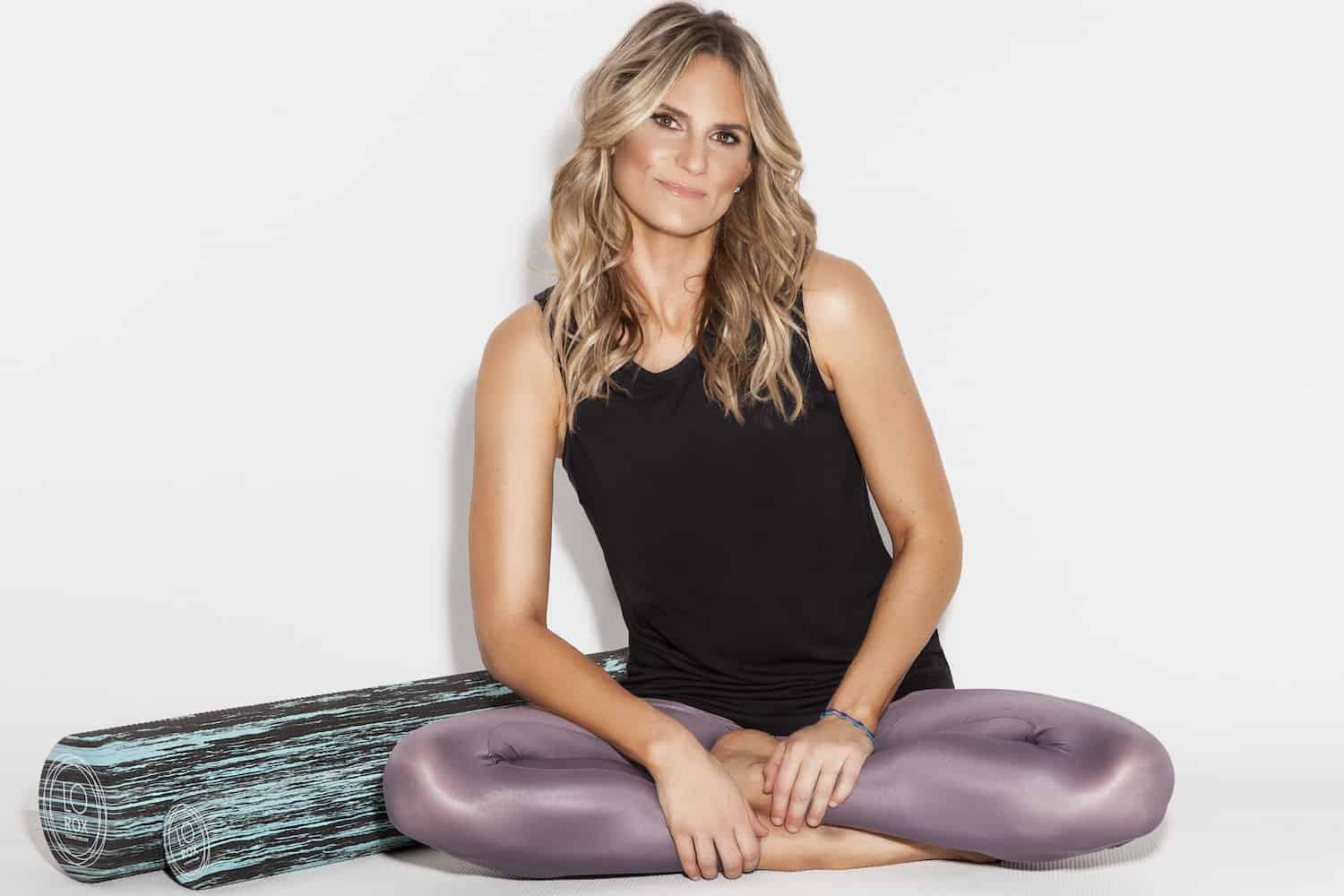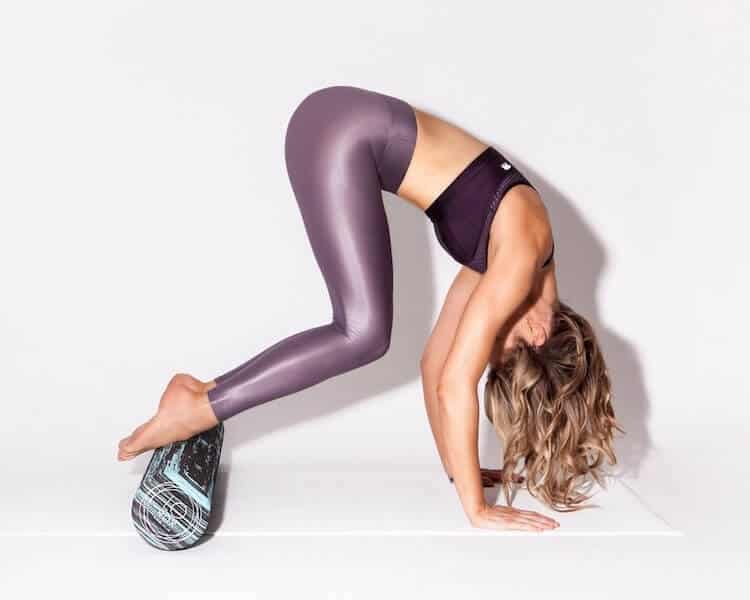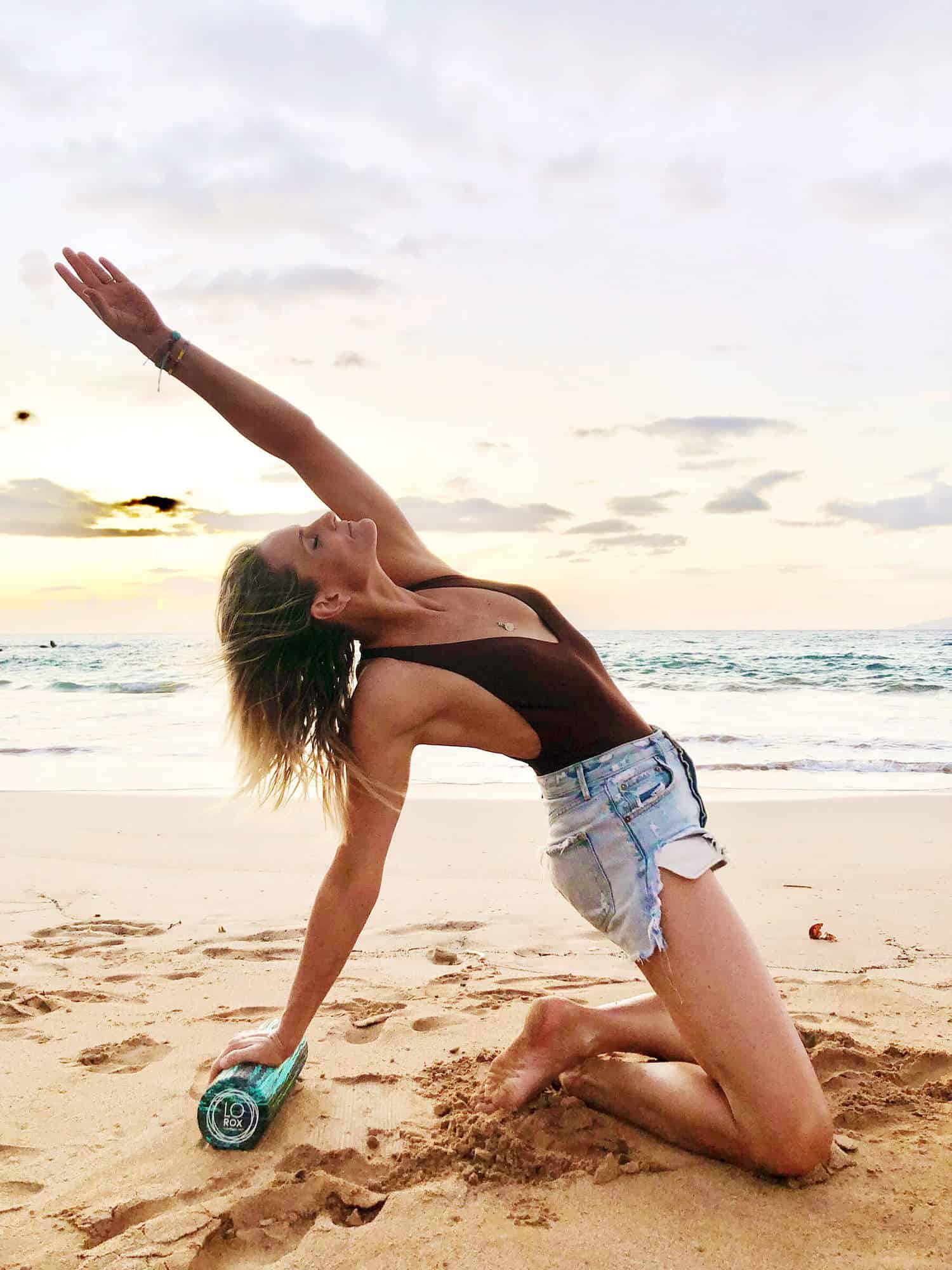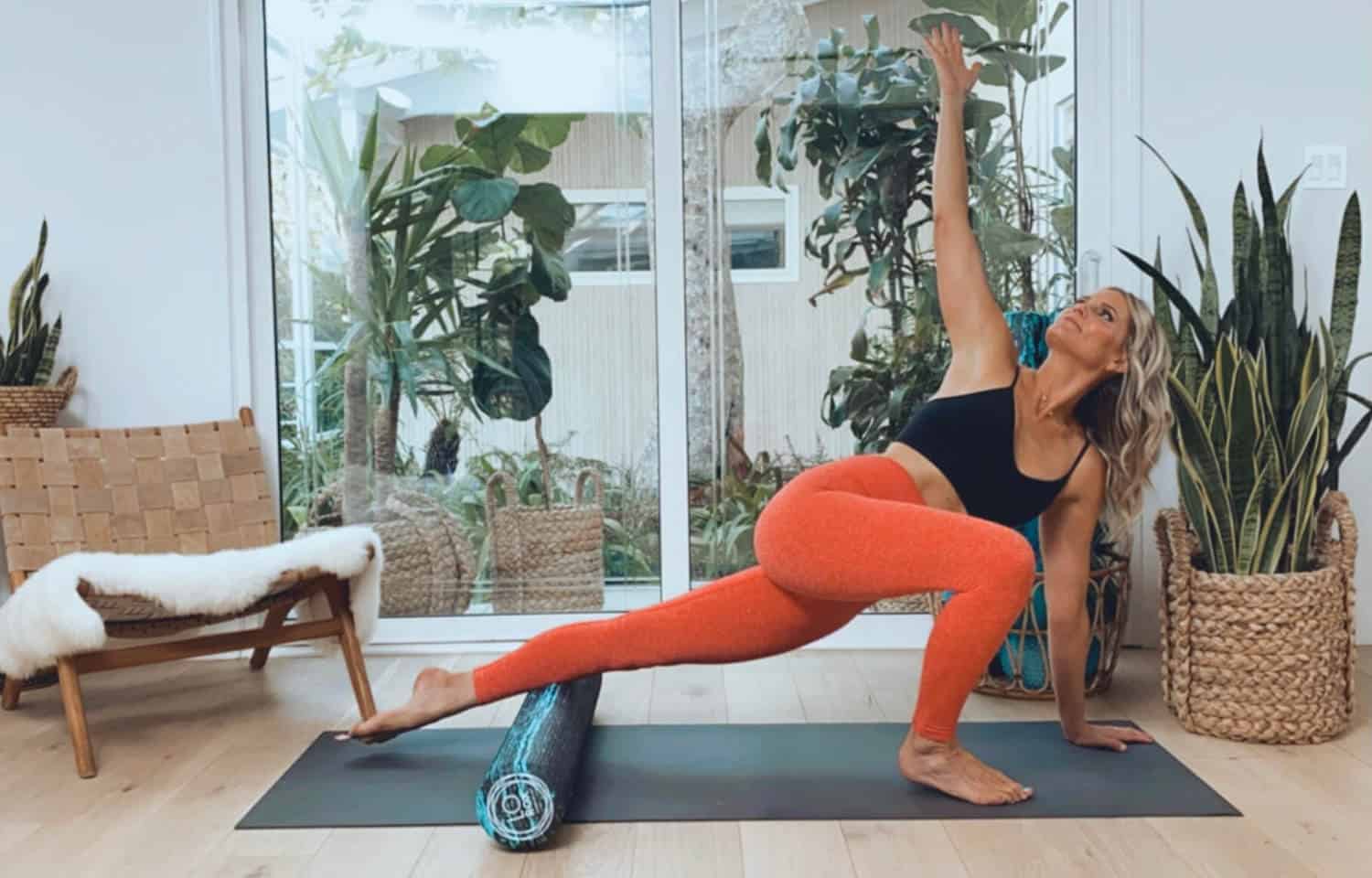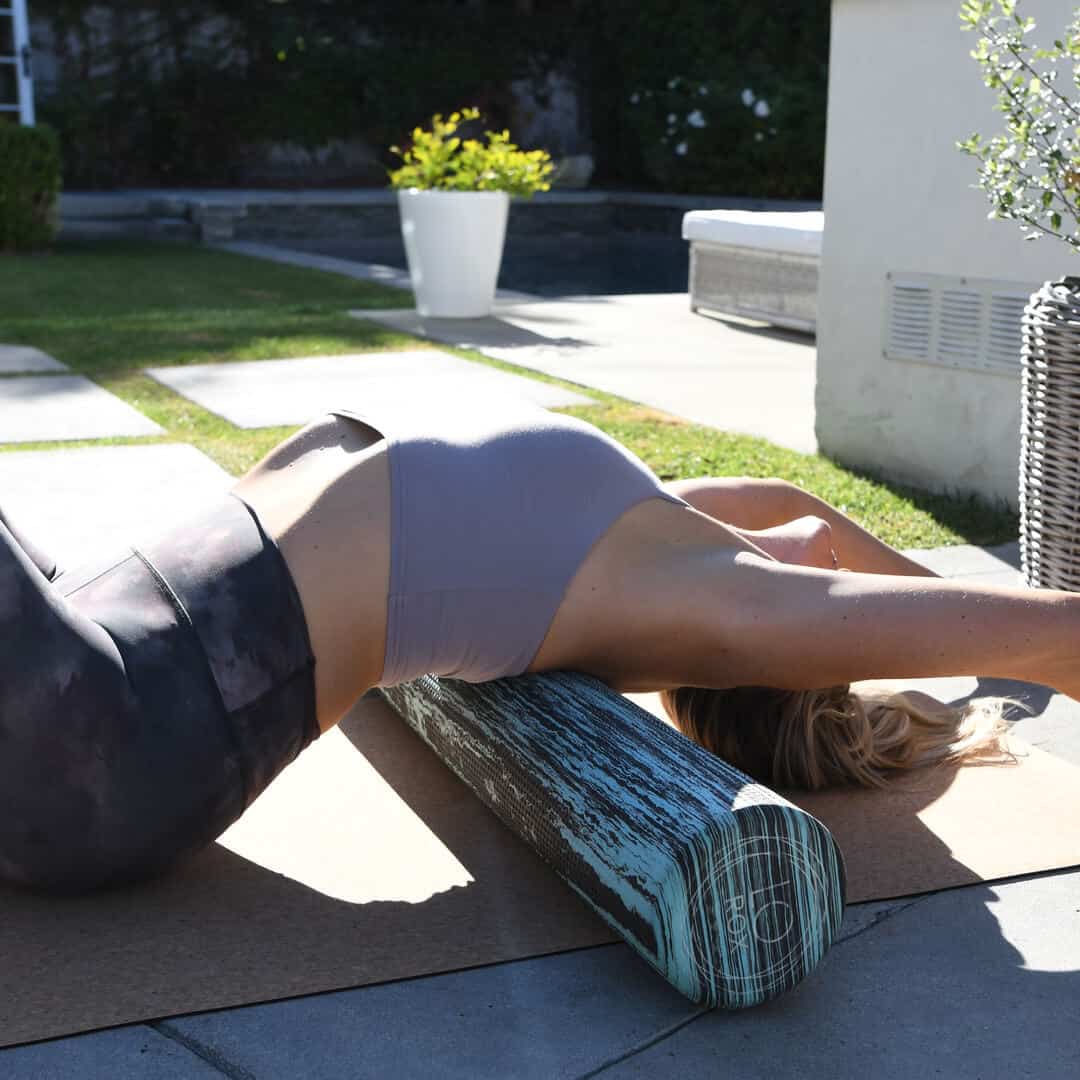It's been a *year*, hasn't it? But among all the uncertainty that 2021 threw at us, it gave us pause to reassess the things that are actually largely within our control: namely, our health. Here, the small but mighty wellness tweaks we adopted this year that we suggest you consider going into 2022...
What are the benefits of foam rolling for after exercise?
Body rolling is capable of far more than just massaging sore muscles after exercise: one of the key benefits of rolling is that it helps smooth out and hydrate the fascia while calming the nervous system to help you restore your cells on every level. This helps oxygenate the blood and improve circulation throughout your entire body, boosting lymphatic drainage and cell turnover. Rolling also helps to ‘lubricate’ the joints and reduces inflammation in the system while helping to increase flexibility and range of motion.
What are the other health and aesthetic benefits of foam rolling?
Most people think of the foam roller as a tool to roll out tight IT bands but used regularly, it can completely transform your body, posture, confidence, and even your state of mind. And the benefits of foam rolling extend way beyond just feeling good: the roller can also help to heal and restore our fascia, which play an important role in the overall structure of our bones and joints.
Tissue hydration and blood circulation
The foam roller acts as a tool for myofascial release and drops you into the rejuvenating state of the nervous system called the parasympathetic state which is all about resting, digesting, and healing. The roller allows you to access the connective tissues of the body (the fascia, known as our sensory organ) in much the same way that body work does. This improves circulation throughout your entire body which helps to oxygenate the blood, boost lymphatic drainage, and flush toxins from the body.
Improving core strength
Used correctly, the roller can also be an incredible tool to help you improve the connection to your intrinsic or core muscles, which we tend to lose connectivity to as we age. In fact, the roller is a total body workout tool that can actually mimic many of the moves on the Pilates Reformer. It is also the perfect complement to whatever other exercise you like to do, or can be a workout in its own right.
Glowing skin and less bloating
Daily rolling sessions make the skin more radiant, and makes muscles look more toned and feel more supple and strong. Rolling also stimulates the lymphatic system to help flush toxins, reduce bloating, and cellulite. The result of this is that a regular rolling routine reboots your entire system and helps you become leaner, and improves digestion and the metabolism. You stand taller with greater confidence and feel calmer and more grounded. Beyond that, rolling has been scientifically proven to boost oxytocin and serotonin – our happy hormones!
Should you foam roller before and/or after exercise?
The foam roller is such a versatile tool because it can be used in so many ways. I love to start the day on the roller since rolling first thing in the morning is a great way to wake up the body, roll away the kinks, and get centred for the day. I also recommend using the roller before workouts (even though many people think you should only use it after or when you’re sore) but rolling out your muscles before you do a workout is a great way to prep your body for movement, hydrate your tissues, and shed accumulated stress and tension.
Rolling at the end of the day is also a great way to relax, unwind, and release built up congestion. So many of us spend our days hunched over computer screens or cell phones, so even just taking five minutes on the roller at the end of the day to open up the body and roll out the kinks can make a huge difference.
What are some rookie errors you should avoid when foam rolling?
Avoid the hunch
Become more mindful of your alignment while using the roller to avoid bad posture. Being hunched will create more tension and stress in your body. Try to avoid straining your wrist joints while rolling by activating your arm muscles. Be sure to also engage your core and practice good posture. If you are present in your body, foam rolling can be like a moving meditation and with body scanning you can enhance awareness.
Don’t be aggressive
This a great time to tune into, connect with, and feel your body. You want to release the layers like peeling back an onion, so think of first letting go of the connective tissue just above your muscles. Try not to go beyond ‘hurts so good’ to avoid injuring yourself.
Don’t forget to breathe
Breathing feeds your tissue oxygenated blood and helps release the excess stress and tension increasing circulation. Plus, breathing while you’re rolling will help you go a little deeper.
Don’t roll too quickly
The whole point of rolling is to increase circulation, blood flow, range of motion, and flexibility, so take your time to tune into each area. You want to allow your neuromuscular system to let go and relax. Use slow and mindful moves to get the best results.
What’s the ideal foam rolling routine in terms of length and frequency?
Obviously when it comes to using the roller, I’m obsessed, so I recommend using it every day. But it’s all about progress, not perfection, so my Body Reset program requires 10-15 minutes a day for three weeks. After that, I recommend you integrate the roller into your usual workout regime.
Use it every day if that feels right, or mix it in with whatever else you love to do. My philosophy is all about finding balance and having fun. So if running is fun for you, do it. Just make sure you mix rolling into your fitness/wellness routine a few times a week.
Bonus offer
If you’d like to find out more on foam rolling and try Lauren’s unique foam rolling videos then join her Aligned Life Studio lifestyle and wellness platform for a FREE 30 day trial. Use the code ALIGNEDLIFE at laurenroxburgh.com/studio when you select the monthly option.
Story by Tess de Vivie de Régie. Photos supplied by Lauren Roxburgh.
Related Posts

What happens when a runway-approved hair tool hits the shelves and promises to reinvent your weekly blow dry ritual?

Could your daily shower be quietly sabotaging your skin and hair? We dive into the murky truth about what’s really...

My skincare secret to a seriously glowy and plump complexion.

One epic day in Tokyo: digital art, vintage treasures, cuddly animals, and ninja-themed dining—all packed into a wild 24-hour family...
